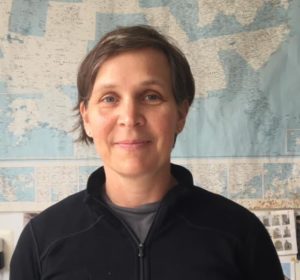 Progressive Voice is a weekly opinion column. The views and opinions expressed in the column are those of the individual and do not necessarily reflect the views of their organizations or ARLnow.com.
Progressive Voice is a weekly opinion column. The views and opinions expressed in the column are those of the individual and do not necessarily reflect the views of their organizations or ARLnow.com.
By Stacy Snyder
Repetition is part of the process I follow as a potter.
My work involves making cups, plates, platters, bowls and vases over and over again. Since there are handmade objects made of clay, each is different, and I frequently find myself having to solve problems. Why did that plate crack? Why did that plate crack again?
Sometimes the problems are within my control, and can be solved easily with a minor repair, and sometimes I am put in a situation where I am forced to have to rethink the way I am working and may need a wholesale rethinking of processes.
Having a problem to solve can be a positive thing. It can lead in a direction that enables me to learn new approaches so I can move my ideas forward in a way I had not thought of before.
It is from this perspective that I view the challenges that Arlington faces with building and planning for new schools. From my experience as chair of the APS Advisory Council on School Facilities and Capital Programs (FAC), here are my thoughts on how to strengthen and streamline the way Arlington builds new schools.
Our school system has added more than 8,000 students since 2007. Over the next decade, APS is planning to add at least two elementary schools, a middle school and 1,300 high school seats as 5,500 more students arrive.
At the same time both the School Board and the County Board are struggling with decisions to close budget deficits and keep bond and capital improvement requests reasonable. So finding money and land for building new schools is challenging.
Given future enrollment growth and facility needs, every school construction decision today needs to be made with a tough, clear-eyed view on how it impacts the long-term seat needs of our entire school system and our budget.
Approving a project over budget without understanding how and where funds will be found or what the impacts may be on other projects — such as the recent Reed project at $6 million over its $49 million budget — is unsustainable.
In my potter’s studio, it would be a mistake for me to continue using the same process if I knew that the outcome would be that darn plate cracking again. Same with school construction issues. It is time to look for new ways of addressing the issues using innovative, collaborative and forward thinking.
Beginning now to prepare for the future with a long-range planning vision will help us to manage community expectations, make early tradeoffs to keep projects on budget and ensure schools in the construction pipeline are treated fairly.
We must look for efficiencies in every part of the planning and building process. In Arlington it can take up to five years to open a new school.
APS should work with the county to find ways of streamlining the permitting process in order to generate savings by cutting the time for bringing a new school on line.
The processes carried out by the Building Level Planning Committee (BLPC), Public Facilities Review Commission (PFRC) and the Joint Facilities Advisory Commission (JFAC) should also be examined with the goal of greater cooperation and establishing parameters that are defined by an understanding of seat needs and the budget constraints of the entire APS system.
We should look at how we use schools and build adaptability and make use of existing spaces, and examine how our educational specifications fit in to the needs of today’s schools.
However, all these improvements will only get us so far unless our elected officials lead the way, enforce the changes and show a united can-do spirit. Change is always scary but doing so now is essential to preparing us for all of our future seat needs while guaranteeing that APS continues providing high quality education.
Stacy Snyder is a ceramic artist who lives and works in Arlington with her family. She is chair of the APS Advisory Council on School Facilities and Capital Programs.

